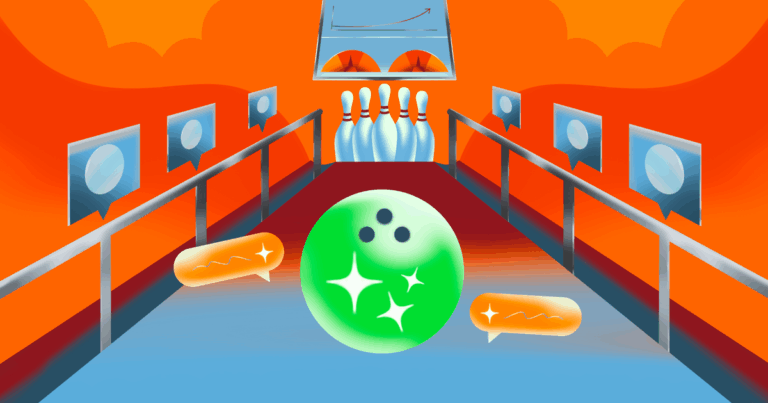In the ever-evolving world of artificial intelligence (AI), the journey from conventional AI to the coveted artificial general intelligence (AGI) remains a topic of intense speculation and debate. This article delves into one of the most intriguing concepts in this journey: the intelligence explosion. As AI continues to advance, the possibility of a sudden leap to AGI through an intelligence explosion captivates both experts and enthusiasts alike.
The notion of an intelligence explosion suggests a scenario where AI rapidly self-improves, leading to the emergence of AGI. This concept is part of a broader analysis of the pathways that could potentially lead us to AGI. Among the seven major paths identified, the intelligence explosion stands out as a moonshot—a radical and unexpected breakthrough that could transform AI as we know it.
Understanding the Intelligence Explosion
The intelligence explosion hypothesis posits that once AI reaches a certain level of capability, it could begin to enhance its own intelligence at an exponential rate. This self-improvement cycle could result in AI surpassing human intelligence, leading to AGI and potentially even artificial superintelligence (ASI).
Historically, the idea of an intelligence explosion was first introduced by British mathematician I.J. Good in 1965. He speculated that an “ultra-intelligent machine” could be the last invention humans need to make, as it would lead to an intelligence explosion that transforms society in unimaginable ways.
“It is more probable than not that, within the twentieth century, an ultra-intelligent machine will be built and that it will be the last invention that man need make since it will lead to an ‘intelligence explosion.'” — I.J. Good
Pathways to AGI: The Role of Intelligence Explosion
The journey to AGI is fraught with uncertainty, and experts have proposed various timelines for its achievement. Some AI luminaries predict AGI by 2030, while others, based on scientific consensus, anticipate it by 2040. The intelligence explosion is one of several pathways that could lead to AGI, each with its own set of challenges and implications.
Seven Major Pathways
- Linear Path: A gradual, step-by-step advancement in AI capabilities.
- S-Curve Path: Periods of stagnation followed by breakthroughs.
- Hockey Stick Path: Slow start with rapid growth due to key inflection points.
- Rambling Path: Erratic progress with external disruptions.
- Moonshot Path: Sudden breakthroughs like the intelligence explosion.
- Never-ending Path: Continuous efforts with no guaranteed success.
- Dead-end Path: Potential impasses preventing AGI attainment.
Among these, the moonshot path, characterized by an intelligence explosion, presents a tantalizing yet speculative possibility. It suggests that AI could suddenly leap to AGI, bypassing the gradual progression seen in other pathways.
Controversies and Implications
The concept of an intelligence explosion is not without controversy. Critics argue that there is no concrete evidence to support the occurrence of such a phenomenon. While intelligence can synergize and grow, the idea of a runaway intelligence explosion remains theoretical.
Moreover, the pace of an intelligence explosion is debated. Some believe it could happen instantaneously, while others suggest it might unfold over years or decades. The lack of consensus underscores the speculative nature of this pathway.
Another critical concern is the potential consequences of an intelligence explosion. If AI rapidly evolves to AGI or ASI, it could pose existential risks to humanity. The fear is that ASI might surpass human control, leading to unforeseen and possibly detrimental outcomes.
Futurecasting the Path to AGI
As we look toward the future, the timeline for achieving AGI remains uncertain. Futurecasting involves mapping out potential scenarios and timelines, both forward-looking and backward-looking. This approach helps envision the steps needed to reach AGI by a specific date, such as 2040.
In a hypothetical timeline, AI could advance steadily from 2025 to 2038, with an intelligence explosion occurring around 2038-2039. This event would catalyze the final leap to AGI by 2040, marking a pivotal moment in AI history.
Years 2025-2038: AI advances significantly but remains short of AGI.
Years 2038-2039: An intelligence explosion occurs.
Years 2039-2040: AGI is achieved.
While this timeline is speculative, it highlights the potential for an intelligence explosion to reshape the future of AI. The implications of such a breakthrough are profound, offering both opportunities and challenges for humanity.
The Role of Human Intentions
As we contemplate the possibility of an intelligence explosion, the importance of guiding AI development with good intentions cannot be overstated. The Dalai Lama once remarked, “It is important to direct our intelligence with good intentions. Without intelligence, we cannot accomplish very much. Without good intentions, the way we exercise our intelligence may have destructive results.”
Ultimately, the path to AGI is not just about technological advancements but also about the ethical and societal choices we make. Ensuring that AI is developed with a focus on benefiting humanity will be crucial in realizing the potential of an intelligence explosion.
As the journey from AI to AGI unfolds, the intelligence explosion remains a captivating possibility. Whether it will occur and how it will shape the future of AI are questions that continue to inspire debate and exploration.

























